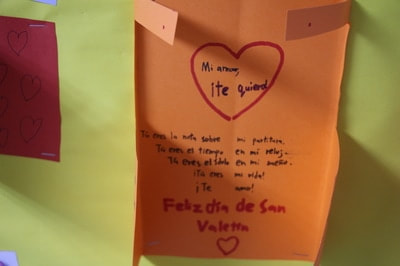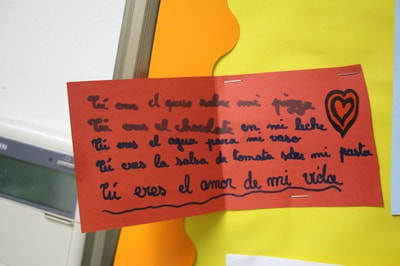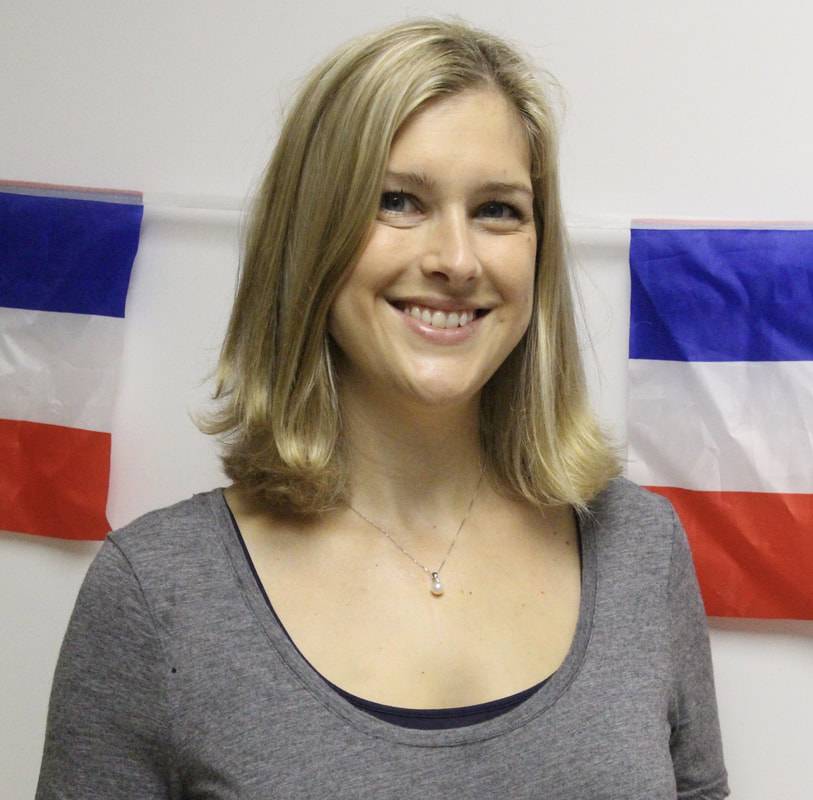|
As part of digital citizenship we should be teaching students not to use images that infringe on copyright. Did you know that in Google you can search for images labelled for noncommercial reuse? All you need to do is click on tools and make your selection. See how below. Good websites offering free images and pictures are:
0 Comments
I am very excited about the assessment task that my Spanish Phase 2 are going to complete for their inquiry unit called "passport to the Hispanic world". The students have been set the task of creating a web page for a travel agency which will give information about a Hispanic city or country of their choice, as well as include a tour proposal for tourists. The students have already completed a presentation on a Hispanic country as part of this unit, and they can choose to re-use this information, or they can choose a new country or city of their choice to research. They also already have knowledge of how to create a web page using https://www.wix.com/, but you can see my example here After the students have written an introductory paragraph about their country or city of choice, they will create their tour using https://tourbuilder.withgoogle.com/. See my example tours below:
0 Comments It is the start of a new semester and new MYP units which means it time for provocations! In a recent workshop with Tania Lattanzio (click here for info on her workshops) I was reminded about the essential criteria for an effective unit provocation:
I wanted to follow these guidelines and really spark enthusiasm in my students for this unit, and give them the opportunity to do a hands-on task using real life objects. I was pleased that as soon as my students walked through the door they were intrigued by the bags of objects on the table, and some started asking if we were making decorations or having a party. So, a hook was created immediately! Through this provocation I wanted the students to figure out for themselves what the unit of inquiry would be about and so the students set about completing the following tasks.
I loved engaging my students in this provocation task and I'm exciting about the upcoming unit. Next up we are going to be inquiring into the celebrations of Christmas and New Year and discovering more about the students' own cultures and how they spent their winter holidays in Shanghai or abroad. Please see below the pictures of provocation lesson and leave me any comments or feedback that you would like to share. It's the beginning of the year and I have just started a new unit with my Spanish Phase 2 group called Passaporte al mundo hispano. To launch this unit, the students watched the below video from National Geographic about cultural differences in which a group of men travel to Sudan and discover a whole new way of life in the USA. The students did not know the theme of the video before watching it and were asked to consider the main theme and message of the video as they watched it. The students then watched the video a second time through and were asked to take notes in Spanish about the examples of culture that were mentioned in the video. We agreed that there were many different examples including food, habits and daily routine, and attitudes. Further to this, we then discussed how this links to our statement of inquiry - Language & Travel help us to understand other cultures. Their first task of the year was to produce a poster in which they would reflect on detail their knowledge of Hispanic culture. See the task below. lTo continue with this unit students looked at a map of North, Central and South America and checked their knowledge of the countries in a simple oral task i.e ¿Qué es esto? ¿Esto es México, no? Some students needed to review the countries and they by following these links:
Nivel 1: http://www.sheppardsoftware.com/country_SoAmCA_GL_Click.html Nivel 2: http://www.sheppardsoftware.com/country_SoAmCA_G1_drag_drop.html Nivel 3: http://www.sheppardsoftware.com/country_SoAmCA_G2_drag_drop.html This activity gave us the oppotunity to discuss which of the countries in South America do not have Spanish as their official language, and also the countries and islands missing from this task i.e. Equatorial Guinea, Balearic Islands, Canary Islands. The students labeled the map provided in the Gente Joven 1 Unidad 6 Cuaderno de Ejercicios and add Puerto Rico (missing from this document). Unidad 6 of Gente Joven 1 is called ¡Buen Viaje! and contains some fantastic student activities for discovering the famous landmarks in the Hispanic world e.g. La Pirámide Maya de Chichén, and opportunities for describing aspects of the human and physical geography of these countries e.g. Cuba es una isla, Lima es una ciudad y una capital. There is also an excllent chapter in this book by J. Raphael Angel called ¿Viajar realmente nos convierte en ciudadanos del mundo? There are sections on understanding how travelling helps us to understand other cultures through famous quotes and also from blog posts. Equally there are some great links to videos and websites about Valencia and Cuba which enable students to look at authentic texts and use their media literacy skills, whilst exploring tourism and culture in those countries. Perfect for keeping your students up-to-date with the latest news in the Hispanic world is the publication called El Mundo En Tus Manos, created by Martina Bex at The Comprehensible Classroom. You can buy the publication here at Teachers Pay Teachers.
To recognise and celebrate international women's day in Spanish, today we started the TPRS storytelling unit <<LAS CHICAS NO JUEGAN AL FÚTBOL AMERICANO>> created by Martina Bex. The story contains a great text to spark a discussion about girls and women in sport. The unit also contains some fantastic cultural tasks such as activities on the football related songs No hay 2 sin 3 and Waivn' Flag, infographics, articles about sports in Spanish speaking countries and an interesting video about basketball in Mexico. To complement this unit, I also did a visual thinking lesson starter on a TV advert for Gol Televisión which you can see here.
My Grade 8 students have been reading the book El Viaje by Deb Navarre as part of their unit of study on the topic of Holidays. The main character in the story does a homestay with a Mexican family and I wanted to find an interesting video about Mexico to use in class. It is important to connect teaching and learning with what is happening in the world (MYP Global Context), and I was very excited to find the Corona advert (below) to share with my students. This advertisement by the Mexican beer company is a response to Donald Trump’s Make America Great campaign and it generated some passionate opinions and heated debate in the classroom. It was wonderful to see my students so motivated to speak Spanish about topical affairs and politics being used as a marketing campaign. Here is the worksheet I gave to my students to use alongside the video. I hope you find it useful. I love teaching lessons about St Valentines as you can have a lot of fun with it. To start we always watch the below video about saying "I love you" in lots of different languages. Infographics are a fantastic way to present real world information concisely and with great visuals. Check out these fantastic infografías de San Valentín and these infografías de amor. This year as a Valentine's project I decided to get the students to make cards with a difference. Practising the structure tú eres and the prepositions sobre, en and de, the students wrote about what their favourite person is to them using some imaginative vocabulary. See the result below. See below the bulletin board I created with the best cards produced from both my French and Spanish beginner classes. |
Juliet OrchardI have been teaching French and Spanish for 13 years. I qualified and started teaching in the UK, and I currently work at Shanghai Community International School, China. I have experience teaching GCSEs and IB DP and MYP. Find out more about me within these blog pages or below at Linked In. Archives
February 2019
Categories |











 RSS Feed
RSS Feed